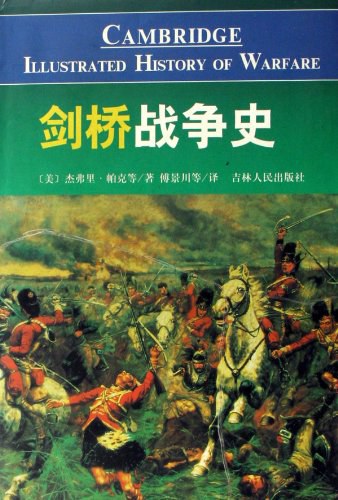
Introduction to Applied Linear Algebra
书刊介绍
内容简介
This book is meant to provide an introduction to vectors, matrices, and least squares methods, basic topics in applied linear algebra. Our goal is to give the beginning student, with little or no prior exposure to linear algebra, a good grounding in the basic ideas, as well as an appreciation for how they are used in many applications, including data fitting, machine learning and artificial intelligence, to-mography, navigation, image processing, finance, and automatic control systems.
The background required of the reader is familiarity with basic mathematical notation. We use calculus in just a few places, but it does not play a critical role and is not a strict prerequisite. Even though the book covers many topics that are traditionally taught as part of probability and statistics, such as fitting mathematical models to data, no knowledge of or background in probability and statistics is needed.
The book covers less mathematics than a typical text on applied linear algebra. We use only one theoretical concept from linear algebra, linear independence, and only one computational tool, the QR factorization; our approach to most applications relies on only one method, least squares (or some extension). In this sense we aim for intellectual economy: With just a few basic mathematical ideas, con-cepts, and methods, we cover many applications. The mathematics we do present, however, is complete, in that we carefully justify every mathematical statement. In contrast to most introductory linear algebra texts, however, we describe many applications, including some that are typically considered advanced topics, like document classification, control, state estimation, and portfolio optimization.
The book does not require any knowledge of computer programming, and can be used as a conventional textbook, by reading the chapters and working the exercises that do not involve numerical computation. This approach however misses out on one of the most compelling reasons to learn the material: You can use the ideas and methods described in this book to do practical things like build a prediction model from data, enhance images, or optimize an investment portfolio. The growing power of computers, together with the development of high level computer languages and packages that support vector and matrix computation, have made it easy to use the methods described in this book for real applications. For this reason we hope that every student of this book will complement their study with computer programming exercises and projects, including some that involve real data. This book includes some generic exercises that require computation; additional ones, and the associated data files and language-specific resources, are available online.
If you read the whole book, work some of the exercises, and carry out computer exercises to implement or use the ideas and methods, you will learn a lot. While there will still be much for you to learn, you will have seen many of the basic ideas behind modern data science and other application areas. We hope you will be empowered to use the methods for your own applications.
The book is divided into three parts. Part I introduces the reader to vectors, and various vector operations and functions like addition, inner product, distance, and angle. We also describe how vectors are used in applications to represent word counts in a document, time series, attributes of a patient, sales of a product, an audio track, an image, or a portfolio of investments. Part II does the same for matrices, culminating with matrix inverses and methods for solving linear equa-tions. Part III, on least squares, is the payoff, at least in terms of the applications. We show how the simple and natural idea of approximately solving a set of over-determined equations, and a few extensions of this basic idea, can be used to solve many practical problems.
The whole book can be covered in a 15 week (semester) course; a 10 week (quarter) course can cover most of the material, by skipping a few applications and perhaps the last two chapters on nonlinear least squares. The book can also be used for self-study, complemented with material available online. By design, the pace of the book accelerates a bit, with many details and simple examples in parts I and II, and more advanced examples and applications in part III. A course for students with little or no background in linear algebra can focus on parts I and II, and cover just a few of the more advanced applications in part III. A more advanced course on applied linear algebra can quickly cover parts I and II as review, and then focus on the applications in part III, as well as additional topics.
We are grateful to many of our colleagues, teaching assistants, and students for helpful suggestions and discussions during the development of this book and the associated courses. We especially thank our colleagues Trevor Hastie, Rob Tibshirani, and Sanjay Lall, as well as Nick Boyd, for discussions about data fitting and classification, and Jenny Hong, Ahmed Bou-Rabee, Keegan Go, David Zeng, and Jaehyun Park, Stanford undergraduates who helped create and teach the course EE103. We thank David Tse, Alex Lemon, Neal Parikh, and Julie Lancashire for carefully reading drafts of this book and making many good suggestions.
作品目录
I Vectors1 Vectors ix
1.1 Vectors
1.2 Vector addition
1.3 Scalar-vector multiplication
1.4 Inner product
1.5 Complexity of vector computations
Exercises
2 Linear functions
2.1 Linear functions
2.2 Taylor approximation
2.3 Regression model
Exercises
3 Norm and distance
3.1 Norm
3.2 Distance
3.3 Standard deviation
3.4 Angle
3.5 Complexity
Exercises
4 Clustering
4.1 Clustering
4.2 A clustering objective
4.3 The k-means algorithm
4.4 Examples
4.5 Applications
Exercises
5 Linear independence
5.1 Linear dependence
5.2 Basis
5.3 Orthonormal vectors
5.4 Gram–Schmidt algorithm
Exercises
II Matrices
6 Matrices
6.1 Matrices
6.2 Zero and identity matrices
6.3 Transpose, addition, and norm
6.4 Matrix-vector multiplication
6.5 Complexity
Exercises
7 Matrix examples
7.1 Geometric transformations
7.2 Selectors
7.3 Incidence matrix
7.4 Convolution
Exercises
8 Linear equations
8.1 Linear and affine functions
8.2 Linear function models
8.3 Systems of linear equations
Exercises
9 Linear dynamical systems
9.1 Linear dynamical systems
9.2 Population dynamics
9.3 Epidemic dynamics
9.4 Motion of a mass
9.5 Supply chain dynamics
Exercises
10 Matrix multiplication
10.1 Matrix-matrix multiplication
10.2 Composition of linear functions
10.3 Matrix power
10.4 QR factorization
Exercises
11 Matrix inverses
11.1 Left and right inverses
11.2 Inverse
11.3 Solving linear equations
11.4 Examples
11.5 Pseudo-inverse
Exercises
III Least squares
12 Least squares
12.1 Least squares problem
12.2 Solution
12.3 Solving least squares problems
12.4 Examples
Exercises
13 Least squares data fitting
13.1 Least squares data fitting
13.2 Validation
13.3 Feature engineering
Exercises
14 Least squares classification
14.1 Classification
14.2 Least squares classifier
14.3 Multi-class classifiers
Exercises
15 Multi-objective least squares
15.1 Multi-objective least squares
15.2 Control
15.3 Estimation and inversion
15.4 Regularized data fitting
15.5 Complexity
Exercises
16 Constrained least squares
16.1 Constrained least squares problem
16.2 Solution
16.3 Solving constrained least squares problems
Exercises
17 Constrained least squares applications
17.1 Portfolio optimization
17.2 Linear quadratic control
17.3 Linear quadratic state estimation
Exercises
18 Nonlinear least squares
18.1 Nonlinear equations and least squares
18.2 Gauss–Newton algorithm
18.3 Levenberg–Marquardt algorithm
18.4 Nonlinear model fitting
18.5 Nonlinear least squares classification
Exercises
19 Constrained nonlinear least squares
19.1 Constrained nonlinear least squares
19.2 Penalty algorithm
19.3 Augmented Lagrangian algorithm
19.4 Nonlinear control
Exercises
Appendices
A Notation
B Complexity
C Derivatives and optimization
C.1 Derivatives
C.2 Optimization
C.3 Lagrange multipliers
D Further study Index
· · · · · ·
作者简介
Stephen P. Boyd is the Samsung Professor of Engineering, and Professor of Electrical Engineering at Stanford University with courtesy appointments in the Department of Computer Science, and the Department of Management Science and Engineering. He is the co-author ofConvex Optimization, written with Lieven Vandenberghe and published by Cambridge University Press in 2004.
Lieven ...
(展开全部)
相关推荐
-

贼猫
“鬼吹灯”系列前传开启“霸唱宇宙”的传奇之作“目前为止我的全部作品中,《贼猫》的语感是最令我感到满意的。”——天下霸唱-《鬼吹灯》前传,“摸金派”祖师爷的传奇一...
-

阿加莎·克里斯蒂的真实人生
(法)安娜•马丁内蒂 Anne Martinetti资深文学及电影类编辑,在法国的一家主营犯罪小说的出版社担任编辑部主任,曾负责阿加莎•克里斯蒂系列的出版。业余...
-

美国宪法的基督教背景
约翰·艾兹摩尔(JohnEidsmoe),是美国宪法法官、宪法律师兼历史学家及知名作家,曾担任美国最高法院前检察官和少年法庭的判决法官,并在托马斯·古岱琼斯法学...
-

瞿力《交换定律》
你想改变自己的命运,沿着事业成功的金字塔不断上升吗?您能准确判断自己在社会体系中的位置吗?您能成功运用自己所掌握的社会资
-

外国古建筑图释
外国古建筑图释 本书特色 《外国古建筑图释》:威尼斯圣母玛丽亚教堂萨卡拉昭赛尔金字塔意大利比萨主教堂阿布辛拜勒神庙迈西尼狮子门帕提侬神庙雅典卫城卢浮宫钟楼外国古...
-

鸟类的行为
虎皮鹦鹉怎样挑选心仪的配偶?看似阴森的渡鸦居然是世界上最贪玩的动物之一?鸟类和我们一样,也会日复一日地与同类交流、劳作、玩耍、育儿、思考,它们的种种行为背后隐藏...
-

近代上海科技先驱之仁济医院与格致书院
近代上海科技先驱之仁济医院与格致书院 目录 自序上海仁济医院史略上海格致书院志略一、倡议之酝酿及经始活动二、书院建置及其规模三、科学知识之引介与推广四、科技教育...
-

不哀之歌
★内容介绍如果说有谁几十年如一日地致力于古典音乐的推广,曹利群必位列其中,他在古典音乐评论和推广上用力颇深。《不哀之歌》即他近年作品的精选集。全书分为“且听”“...
-

转化生命的友谊
侯士庭(James M. Houston)当代著名灵修神学家、神学教育家,加拿大维真学院创办人,任该学院的校长和灵修神学教授多年,对福音派灵修神学及平信徒神学教...
-

目連救母故事之演進及其有關文學之研究
目連救母的傳說,是家喻戶曉的故事,透過宗教儀式、文學、藝術等形態,在民間到處流布,推行遍及全國,並遠播韓國、日本。自盂蘭盆經流傳以來,歷經了一千七百年的時間,一...
-

中医时空论-基于时空模块与运用的智慧
中医时空论-基于时空模块与运用的智慧 本书特色 杨友发、洪流所著的《中医时空论(基于时空模拟与运用的智慧)》全面探讨了中医学对于时间空间的领悟、模拟以及临床运用...
-

一千零一夜
譯者李唯中,民國二十九年(1940)生于冀南廣宗一贫寒书香人家,中学时即迷恋上外国语及外国文学,民國四十九年(1960年)考取位於北平市的北京对外贸易学院翻译系...
-

我们不能停止不爱:杜拉斯传
凌小汐,湖南邵阳人,小隐尘世,出没网络。著有《致我们终将逝去的爱情:国外最美诗歌品鉴》《花间十六拍:古典花木随笔》《最是那一低头的温柔:致徐志摩的七封信》《今生...
-

空城计
呼延云全新长篇力作——六小时全城攻防战!神秘送餐员,接连袭击无辜儿童深夜急诊室,险情不断生死未卜“泻水置平地,各自东西南北流;人生亦有命,安能行叹复坐愁?”呼延...
-

针灸临床处方速记口袋书
针灸临床处方速记口袋书 本书特色 《针灸临床处方速记口袋书》:针灸腧穴速记歌诀考点明确重点突出易于理解便于记忆针灸临床处方速记口袋书 内容简介 本书主要讲述经络...
-

水环境风险监测与应急响应技术
水环境风险监测与应急响应技术 内容简介 目前随着社会经济的高速发展,近年来水环境污染事故频繁发生,为预防重大污染事故,减轻其对人和环境造成的危害,确保水环境风险...
-

刑法总论(新版第2版)(当代世界学术名著)
刑法总论(新版第2版)(当代世界学术名著) 本书特色 本书是日本目前*为畅销的刑法教科书之一,本书体系完整,观点成熟;概括全面,分析入微,堪称日本当今刑法学界通...
-

宗教的自然史
作品目录编者导言导言第一章 多神教是人类最初的宗教第二章 多神教的起源第三章 续同一主题第四章 众神并不被认为是世界的创造者
-

剑桥战争史
从古希腊马拉松之战告捷到海湾战争,《剑桥战争史》铺展开历史上兵戈之争重要战事的来龙去脉——涵纳了陆海空战役的所有方面:武器和技术,谋略和防务,风纪和谍报,雇佣兵...
-

墨脱植物考察追记
1990年,国家自然科学基金委启动了“中国种子植物区系研究”的重大课题,其中一个子项目为“一些关键地区和研究薄弱地区的区系调查研究”。墨脱便是当时中国植物区系研...





